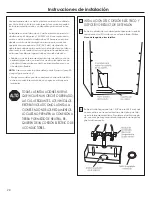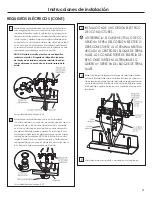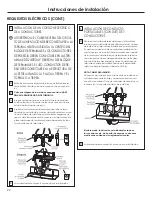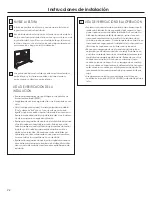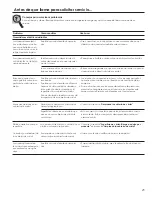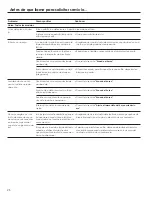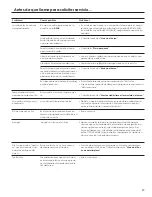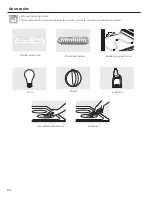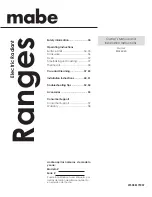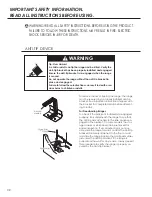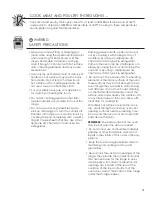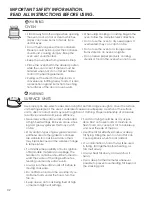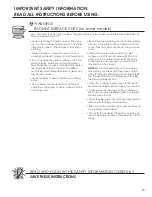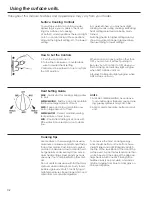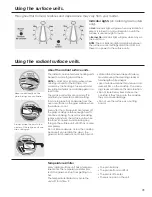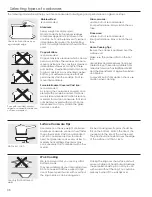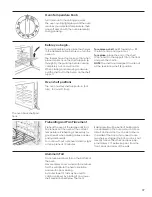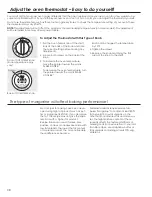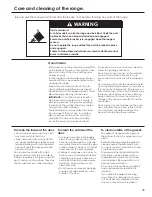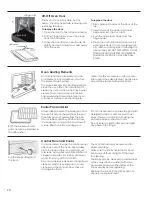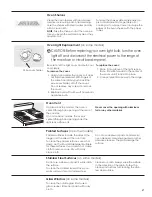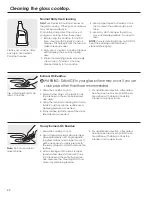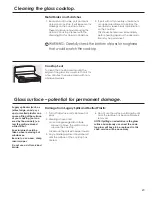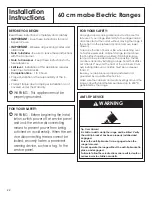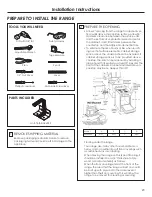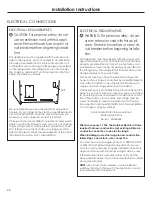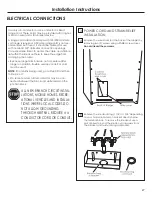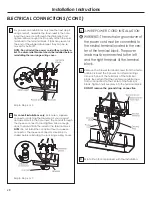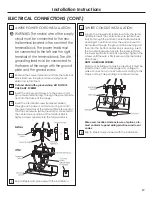
34
Using the surface units.
Throughout this manual, features and appearance may vary from your model.
How to Set the Controls
Surface Cooking Controls
Your surface units and controls are de-
signed to give you a variety of heat set-
tings for surface unit cooking.
At both LO and HI positions, there is a slight
notch so control clicks at those positions;
HI marks the highest setting; LO, the lowest
setting.
In a quiet kitchen, you may hear slight
clicking sounds during cooking, indicating
heat settings selected are being main-
tained.
Switching heats to higher settings always
shows a quicker change in temperature
than switching to lower settings.
1. Push the control knob in.
2. Turn either clockwise or counterclock-
wise to desired heat setting.
Control must be pushed in to set only from
the OFF position.
When control is in any position other than
OFF, you can turn it without pushing in.
Be sure you turn control to OFF when you
finish cooking. An indicator light will glow
when ANY surface unit is on.
A Burner On indicator light will glow when
ANY surface unit is on.
Heat Setting Guide
MAX
- Quick start for cooking; bring water
to boil.
MEDIUM HIGH
- Fast fry, pan broil; maintain
fast boil on large amount of food.
MED
- Sauce and brown; maintain slow
boil on large amount of food.
MEDIUM LOW
- Cereal; maintain serving
temperature of most foods.
MIN
- Cook after starting at HI; cook with
little water in covered pan. Use to steam
rice.
NOTES:
1. At MAX or MEDIUM HIGH, never leave
food unattended. Boilovers cause smok-
ing; greasy spillovers may catch fire.
2. At MIN, melt chocolate, butter on small
unit.
Cooking Tips
Use medium- or heavyweight cookware.
Aluminum cookware conducts heat faster
than other metals. Cast-iron and coated
cast-iron cookware is slow to absorb heat,
but generally cooks evenly at low or me-
dium heat settings. Steel pans may cook
unevenly if not combined with other met-
als.
Do not overfill cookware with fat that may
spill over when adding food. Frosty foods
bubble vigorously. Watch foods frying at
high temperatures. Keep range and hood
clean from accumulated grease.
To conserve the most cooking energy,
pans should be flat on the bottom, have
straight sides and tight-fitting lids. Match
the size of the saucepan to the size of the
surface unit. A pan that extends more than
an inch beyond the edge of the drip pan
traps heat, which causes "crazing" (fine
hairline cracks) on porcelain, and discol-
oration ranging from blue to dark gray on
chrome drip pans.
Содержание EME6063
Страница 56: ...56 Notes ...

